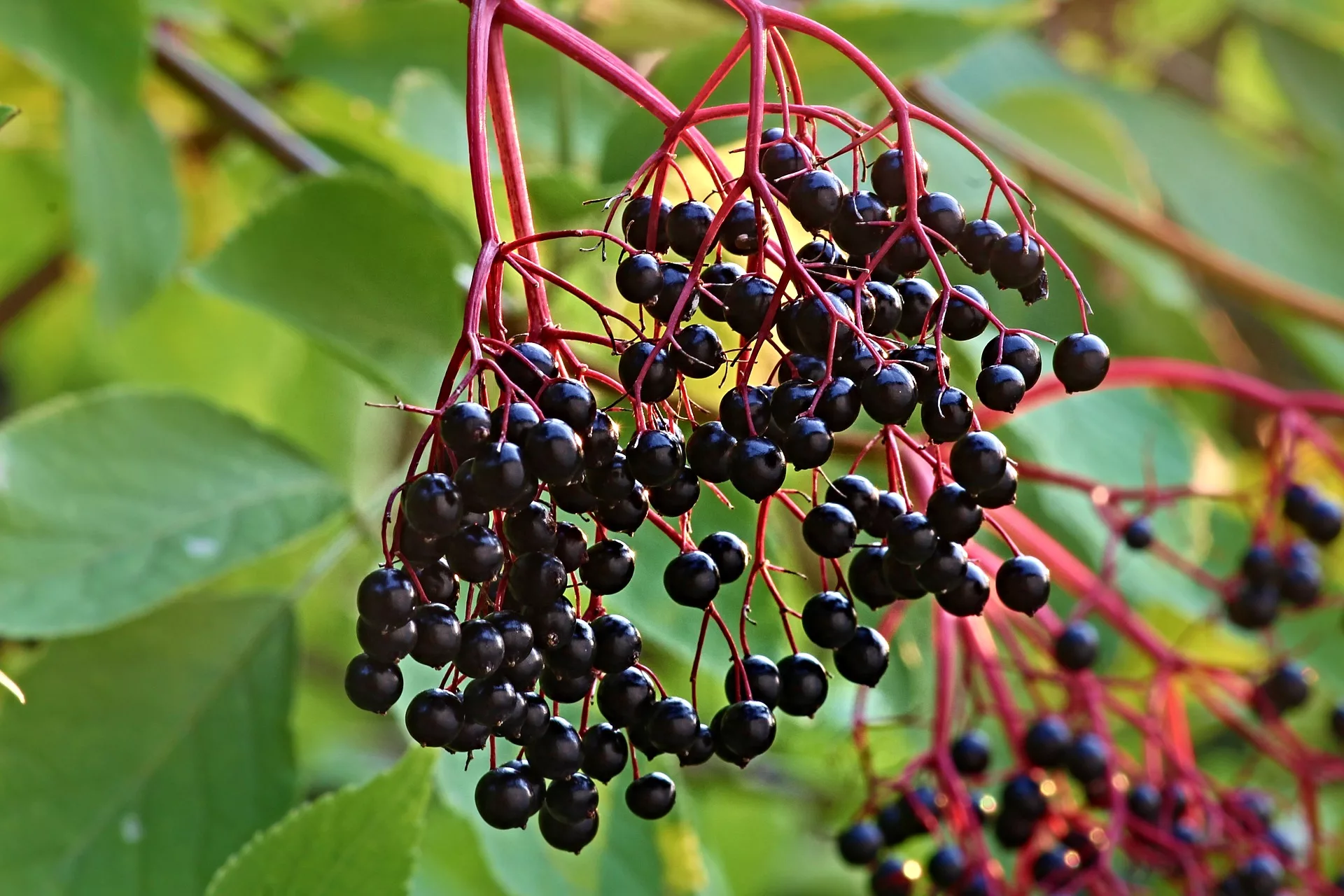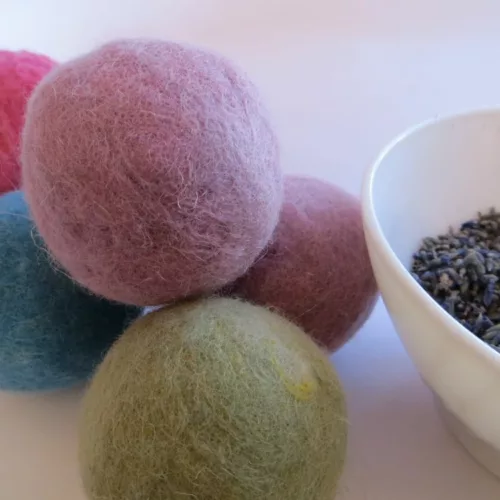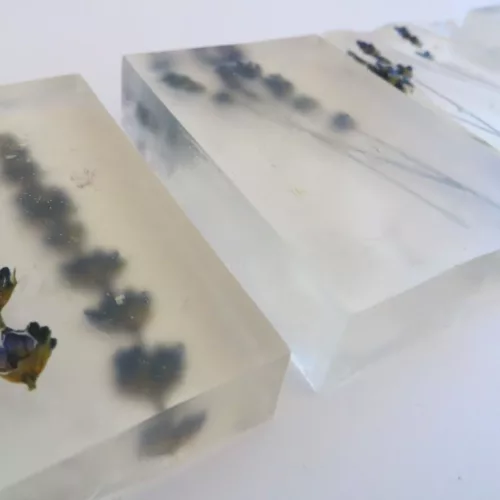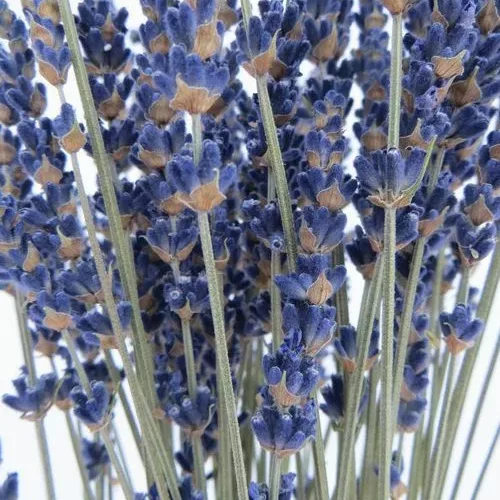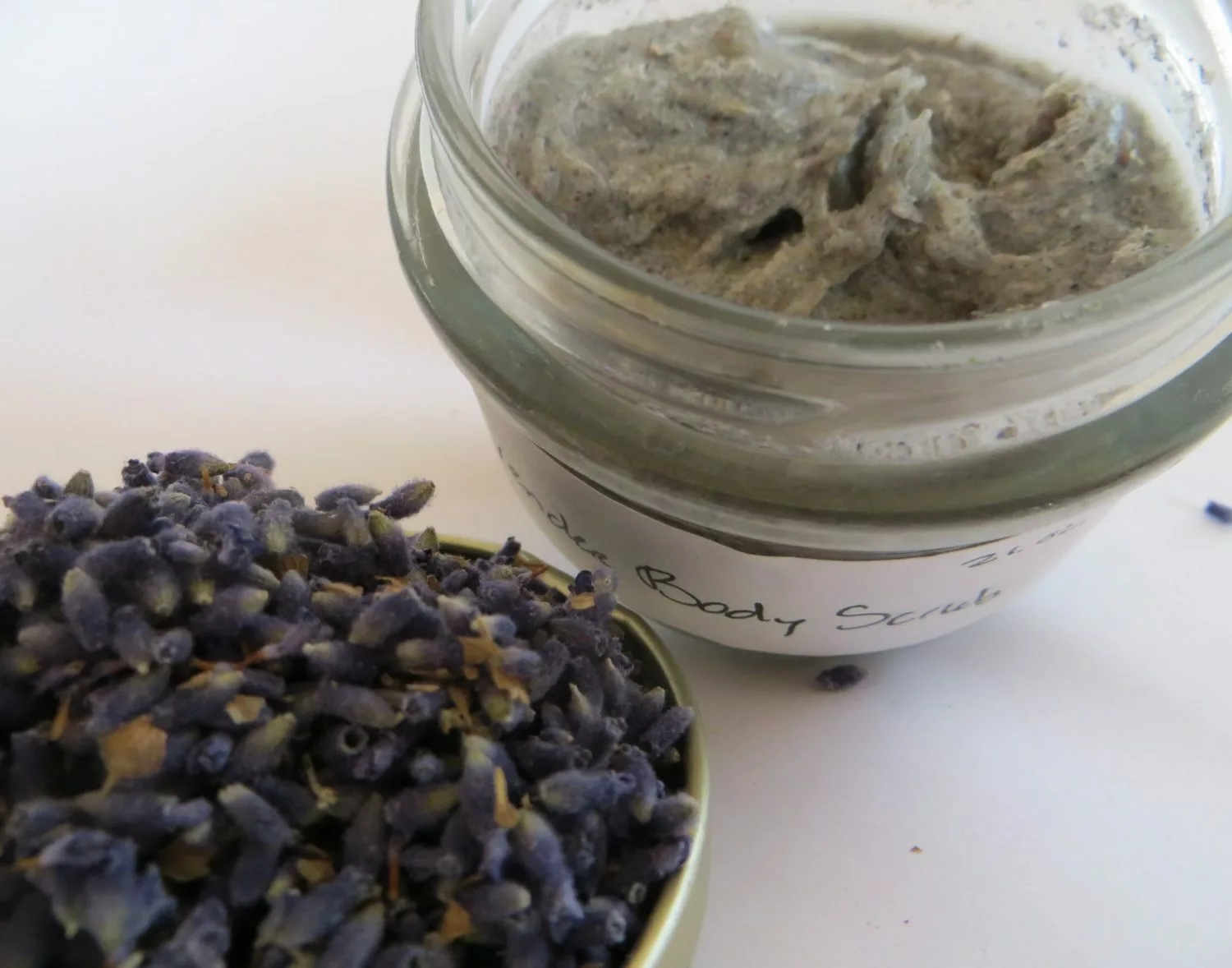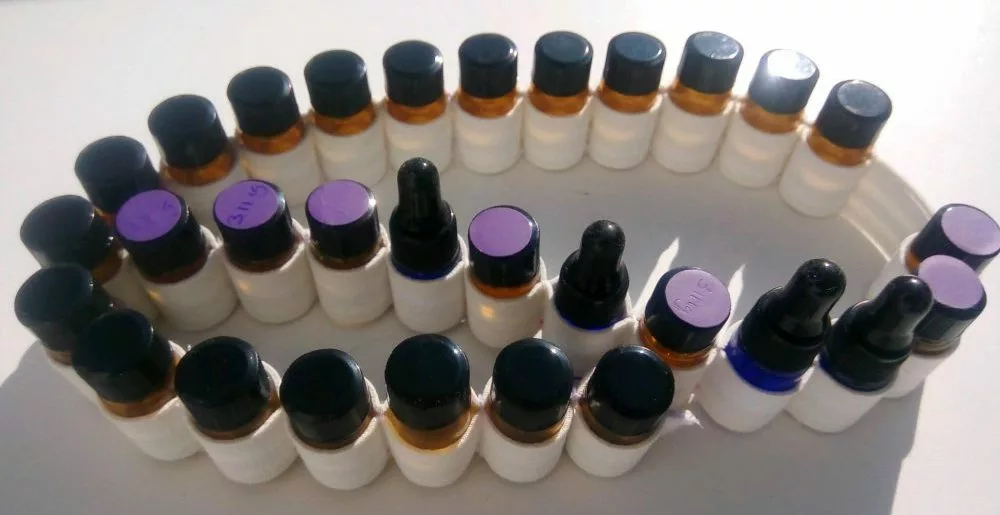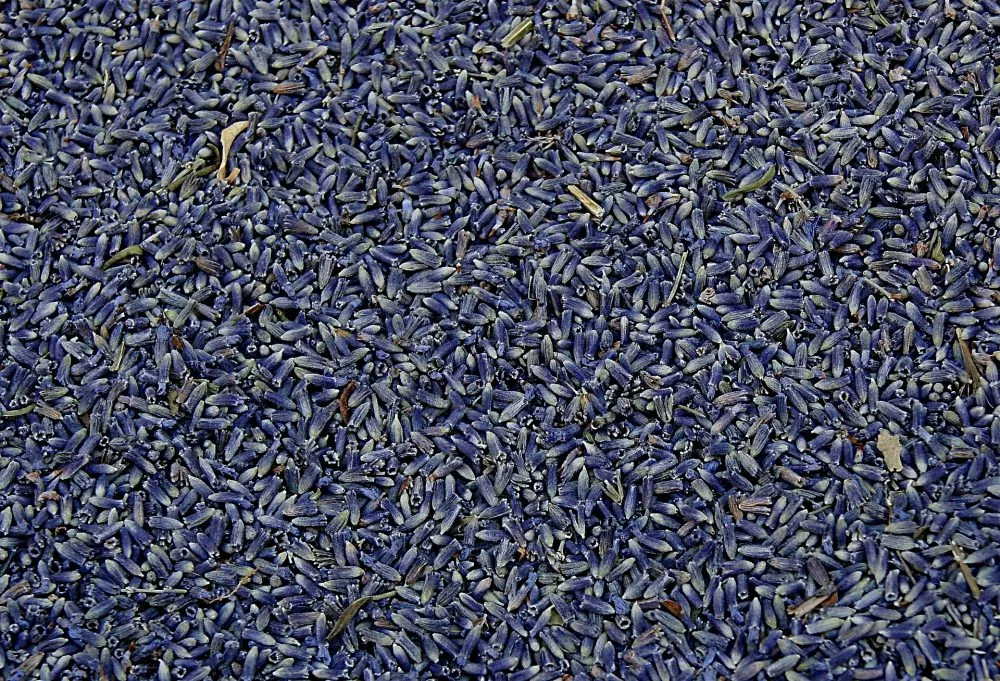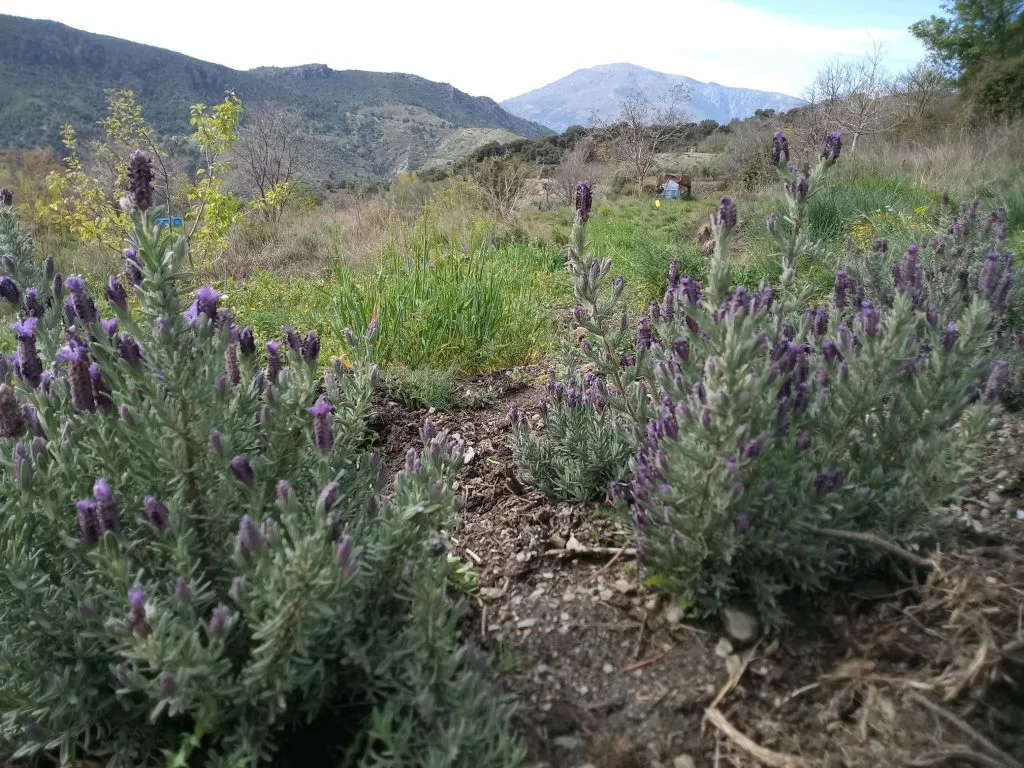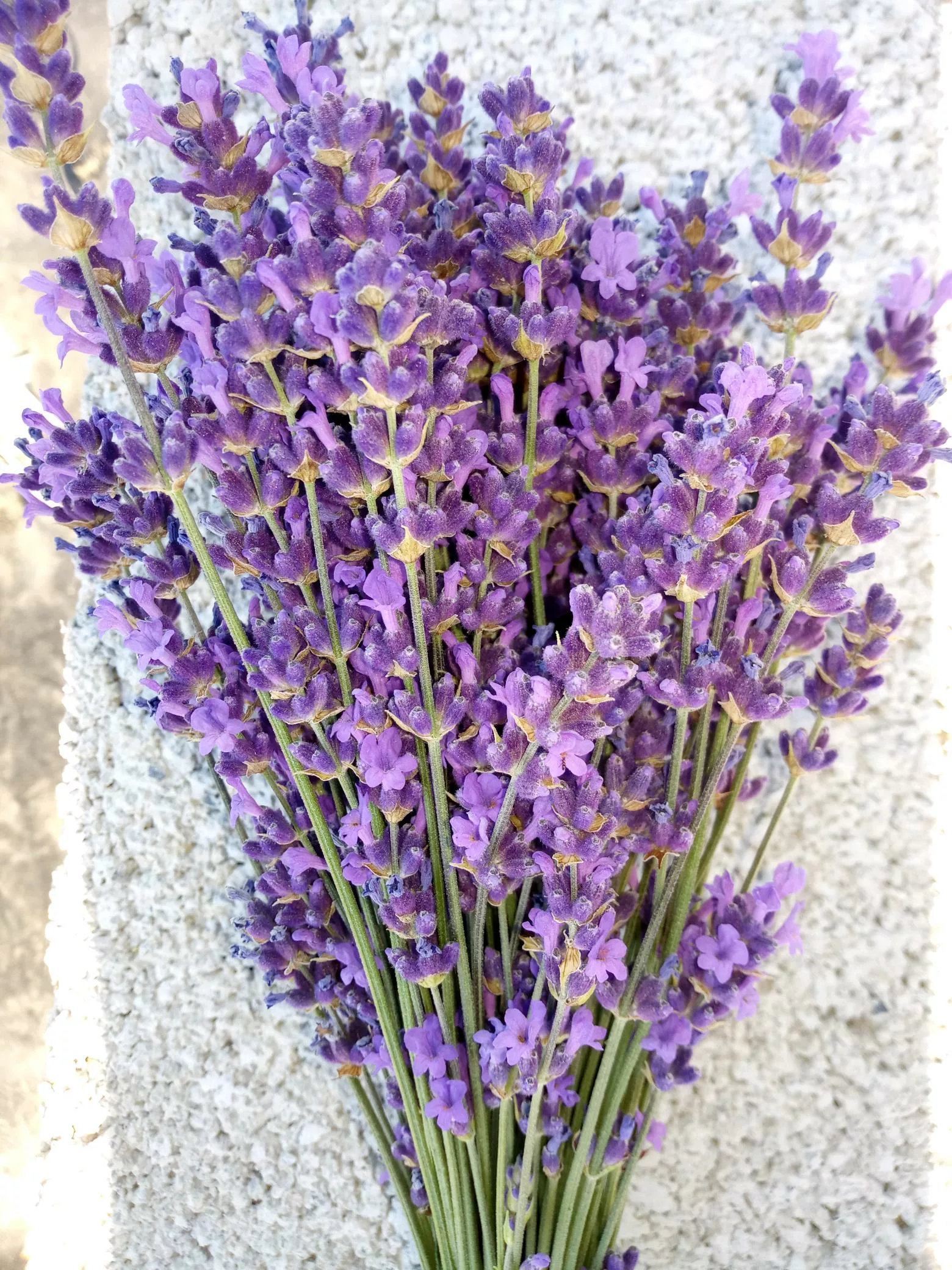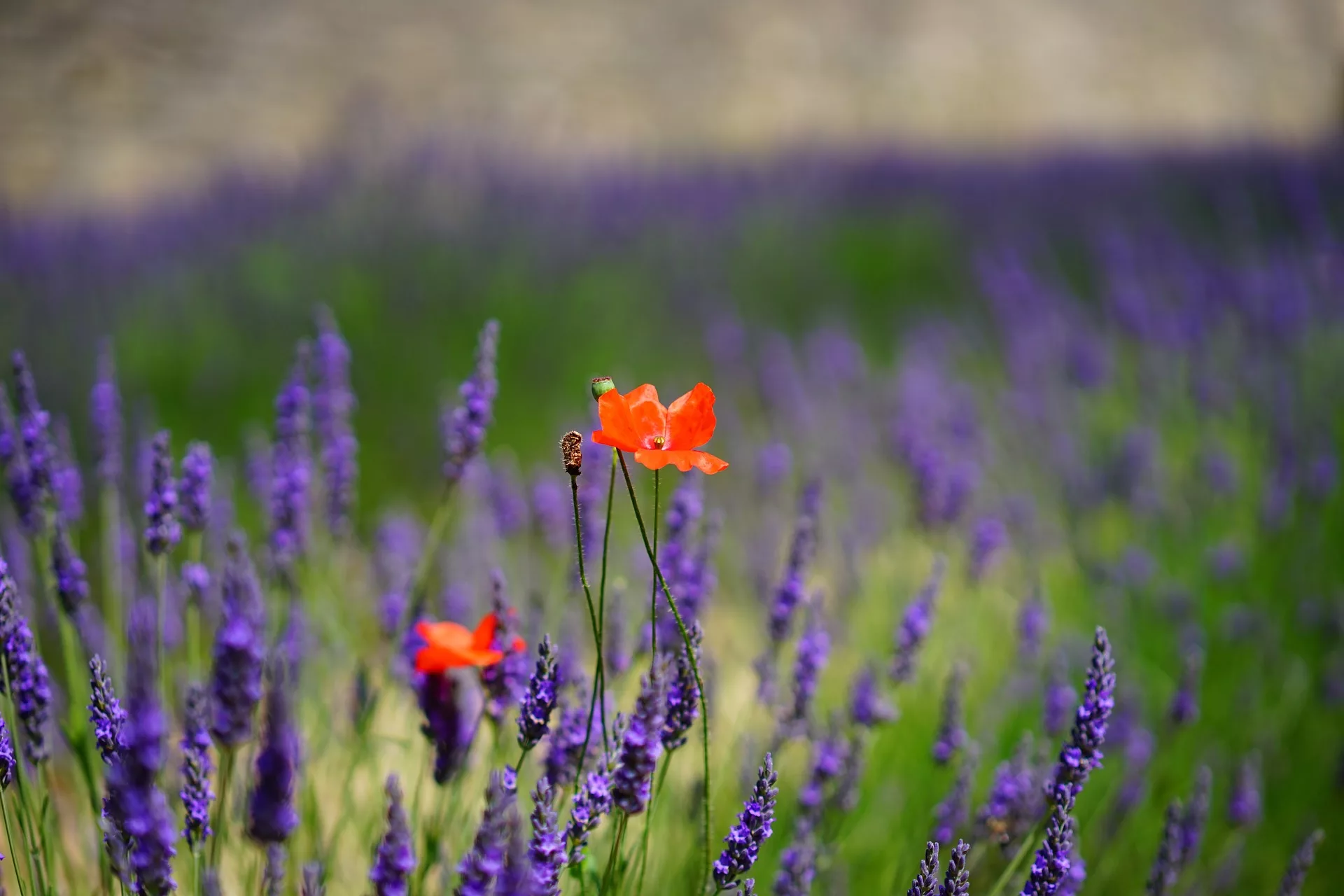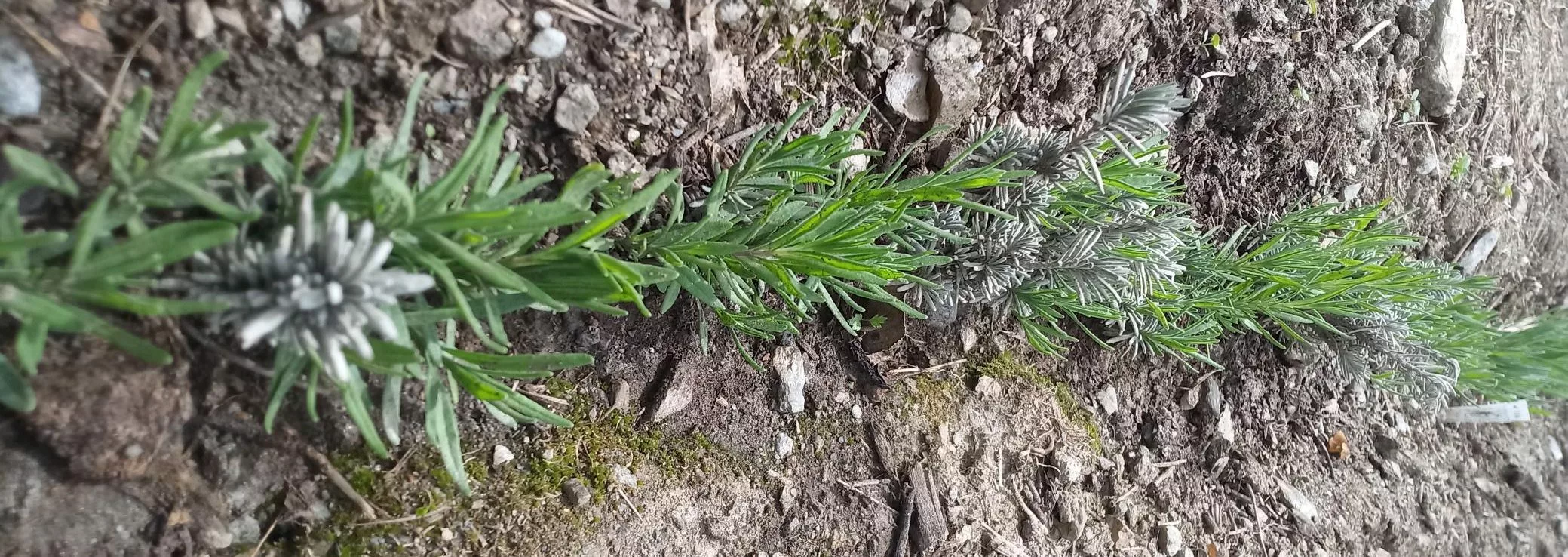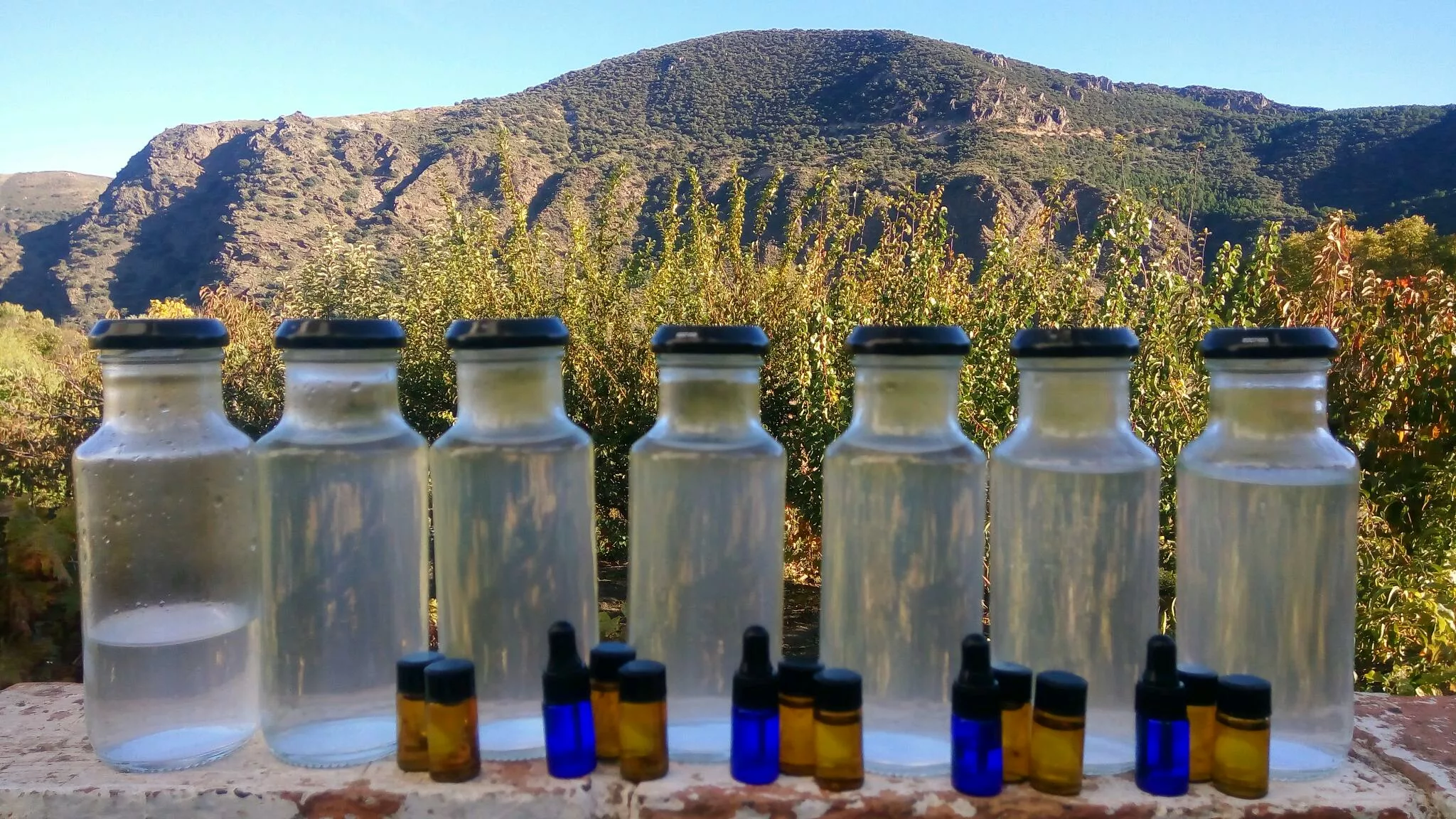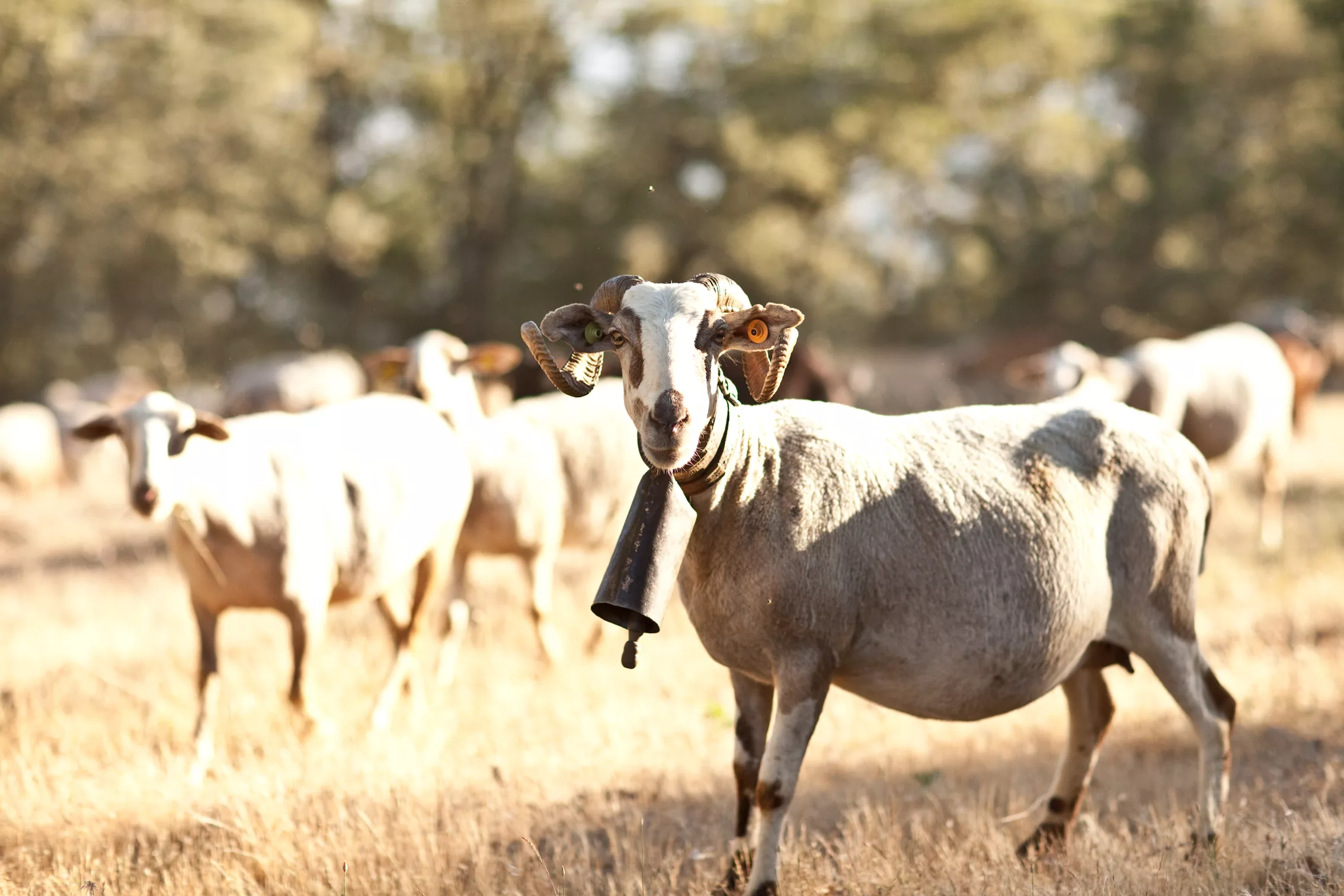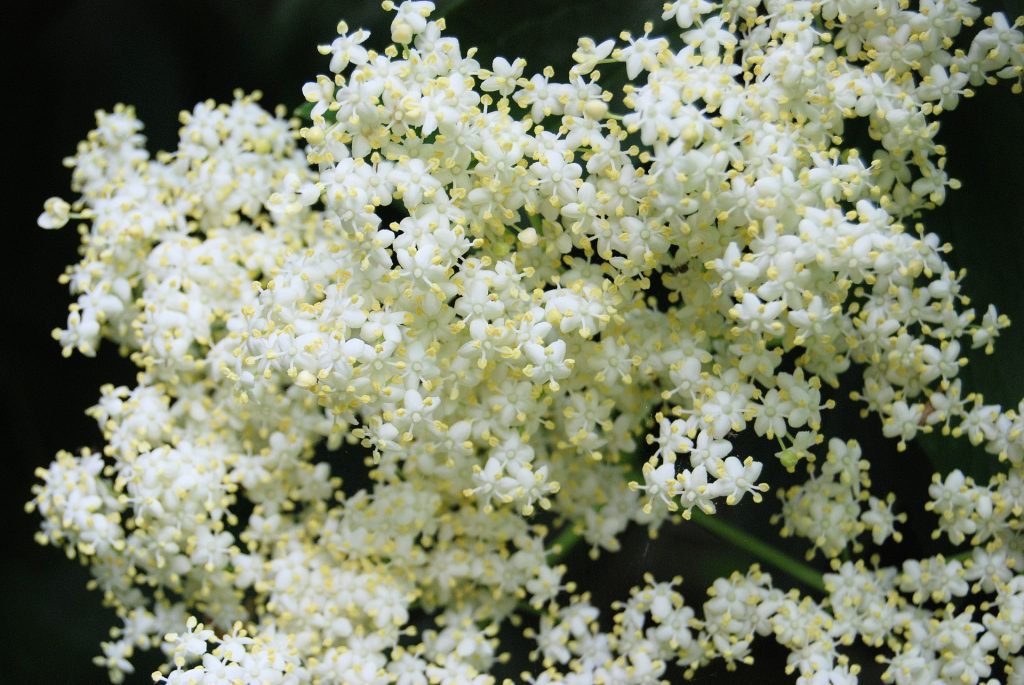
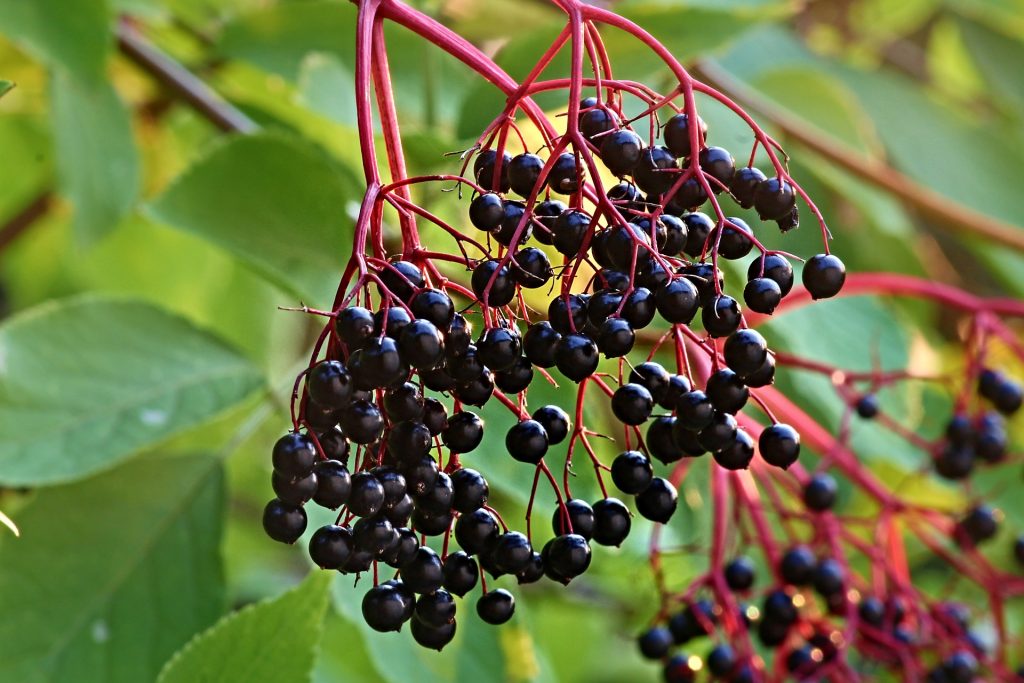
- Chrush the fresh elderberry – as much weight as the wool – and boil it in water for an hour.
- Immerse the wool in PH neutral water of the same temperature as the wool, and by the time the elderberry dye is ready, slowly heat the pan of wool.
- Put the elderberry water through the sieve and the coloured hot water into the pan of wool.
- Let it simmer for an hour, then leave it to cool in the pan overnight and rinse.
- Take care of the temperture of the wool, never let it go from cold to hot water or vica versa. If not you are already felting the wool. Something I did not know when I first washed the sheep wool of the local shepherd.
And then I get this colour: a kind of old pink.

To post-treat the dyed wool for more colour variation
I’m going to post-treat the dyed wool with soda, vinegar and iron like I did with the dandelion. Mmm that’s a pity, post-treatment with copper would go from pink to purple, so for me it would be suitable to end up with purple perhaps. But I skip that for toxicity reasons.
- In a glass I put the cold iron water and the wet elderberry-dyed wool.
- In another glass, cold water with soda
- And in the third glass cold water with white vinegar
- I start with 1 teaspoon of soda and vinegar and eventually make it 2 if I notice that the colour does not change dramatically.
After an hour of soaking, I do indeed get a few new colours, but the differences are relatively small. I don’t know yet whether my wished colour is among them.
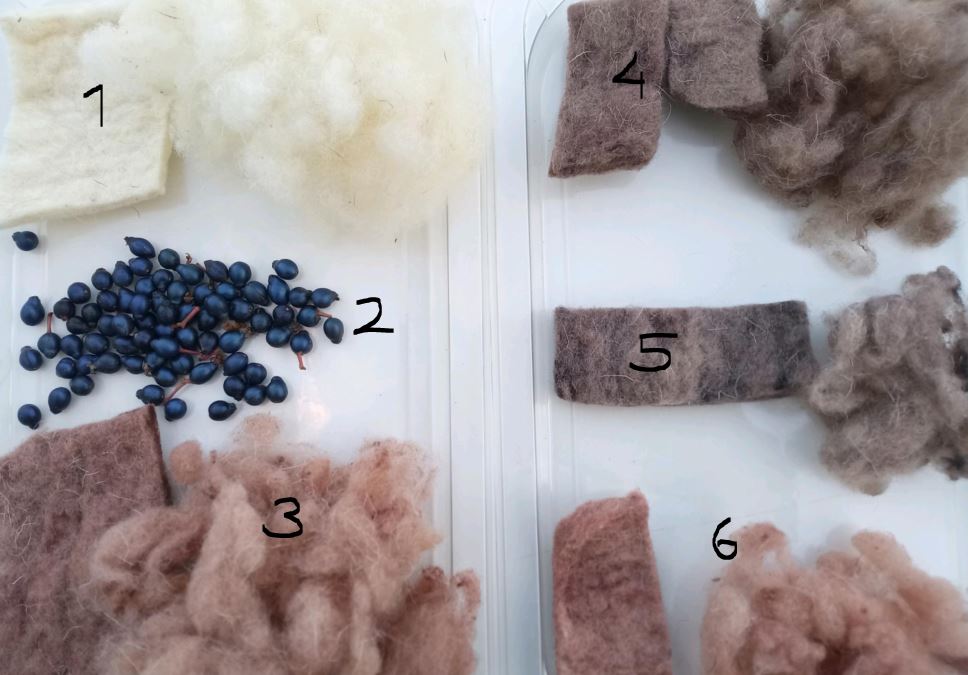
2. Elderberrys
3. Wool dyed with elderberrys, no pre-treatment.
4. Alkaline post-treatment (washing soda) of elderberry dyed wool.
5. Iron post-treatment with water from the iron well of elderberry wool
6. Vinegar post-treatment of elderberry dyed wool
The next day, the colours are different again. I had flung out the excess water in an old salad spinner, but had not rinsed out the wool. Not realising that you’d better do that if you want to keep the colours. In this case, the process continued and the colours turned out differently in the morning.
-
 Stress ball with real lavender21,95€ – 22,95€
Stress ball with real lavender21,95€ – 22,95€ -
Sale Product on sale
 Soap making kit lavender DIY11,95€ – 25,95€
Soap making kit lavender DIY11,95€ – 25,95€ -
 Pressed lavender flowers5,95€
Pressed lavender flowers5,95€ -
 Bouquet blue real lavender8,95€
Bouquet blue real lavender8,95€
Where yesterday the soda treatment was relatively grey, this morning it was burgundy. It shows that the variations are endless. Choice of plant material, but also the dyeing time, type of dye bath, pre-treatment and post-treatment and PH of the water. But also when to rinse the dyed material.
See also:
Natural dyeing wool with dandelion
See here all my blogs about sheep’s wool and DIY projects with wool
Do you have experience with natural wool dyeing? Or are you going to try this method? I look forward to hearing from you.

